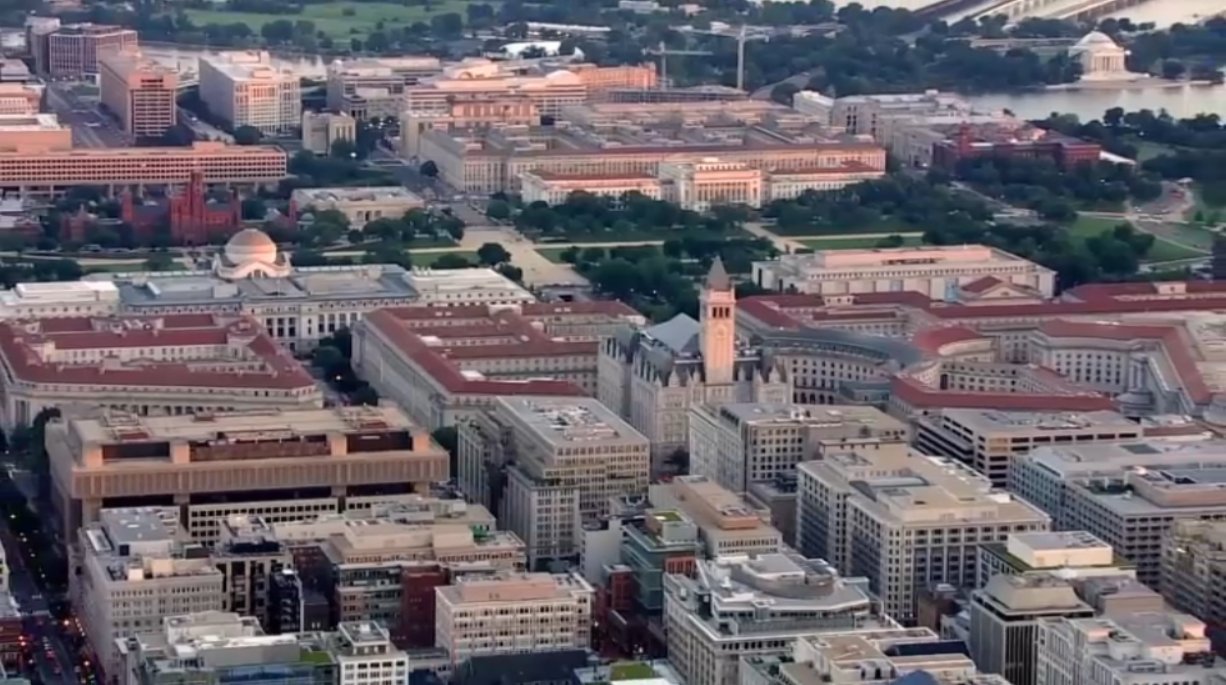The Trump administration published a list of over 400 federal properties it said need to be sold, including over 100 in the D.C. area. Within 24 hours, the list was gone. News4’s Ted Oberg reports.
The Trump administration sparked confusion this week after publishing a list of more than 400 federal properties it said could be up for sale, including more than 100 in the D.C. area. Adding to the chaos, the list was revised, downsized and then deleted within 24 hours.
The issue began when the General Services Administration (GSA) published a list Tuesday of 443 properties it called “non-core assets” that had been marked for “divestment from government ownership.”
When announcing the list, the GSA explained in a statement: “Decades of funding deficiencies have resulted in many of these buildings becoming functionally obsolete and unsuitable for use by our federal workforce. We can no longer hope that funding will emerge to resolve these longstanding issues.”
The properties included such historic buildings as the Department of Justice in downtown D.C. and the newly renovated U.S. Census Bureau in Suitland, Maryland, as well as several other agency headquarters, courthouses, office buildings and even parking garages across the country.
We've got the news you need to know to start your day. Sign up for the First & 4Most morning newsletter — delivered to your inbox daily. Sign up here.
But within hours, about 120 properties, including dozens in the District, were taken off the public list. By Wednesday morning, the list had been deleted from its website, with the GSA link instead saying the list of non-core assets was “coming soon.”
In a statement Wednesday, the GSA didn’t explain why the list disappeared but said: “Since publishing the initial list on March 4, 2025, we have received an overwhelming amount of interest. We anticipate the list will be republished in the near future after we evaluate this initial input and determine how we can make it easier for stakeholders to understand the nuances of the assets listed.”
The news comes as President Donald Trump and billionaire Elon Musk have both ordered federal workers to return to the office while simultaneously taking steps to slash the workforce and cut government spending through canceling leases and contracts – moves that have sparked several legal challenges.
The News4 I-Team reviewed the initial list published Tuesday and found it included 14 properties in Virginia, such as a State Department field office in Arlington; 83 in Maryland, with dozens of properties in Silver Spring; and 41 in the District, including the FBI headquarters, Department of Labor and the Department of Housing and Urban Development.
D.C. Mayor Muriel Bowser called the list “outrageous,” telling News4: “The biggest thing is, and this will be my ask to the president, is you cannot dump buildings on the market without preparation or a plan, because it would be antithetical to making this the most beautiful capital city in the world.”
Some properties on the list were previously identified as possibilities for sale by the Public Buildings Reform Board, a group Congress created years ago to study the issue and make real estate recommendations, but sources tell the I-Team the PBRB was not involved in Tuesday’s move.
Meanwhile, agencies are expected to begin reporting occupancy data under law passed by Congress last year to help them identify which buildings are underused and therefore should be sold.
Real estate experts who have closely watched this issue told the I-Team they are as confused as many others are about which properties made the list and why it was made public.
The I-Team put those questions to the GSA, which has not responded to News4 but said in its public statement Wednesday that “just because an asset is on the list doesn’t mean it’s immediately for sale.” They will, however, “consider compelling offers.”
Mark Segraves contributed to this report.



